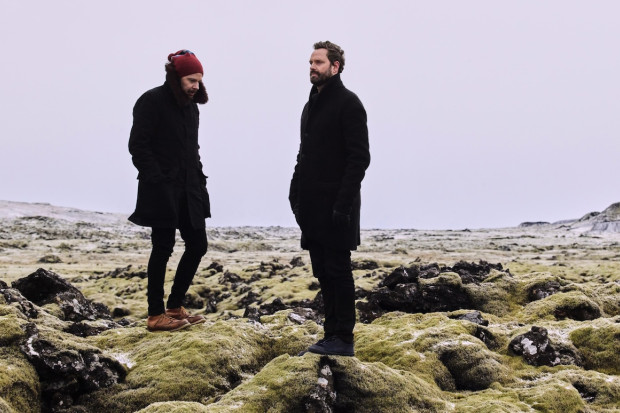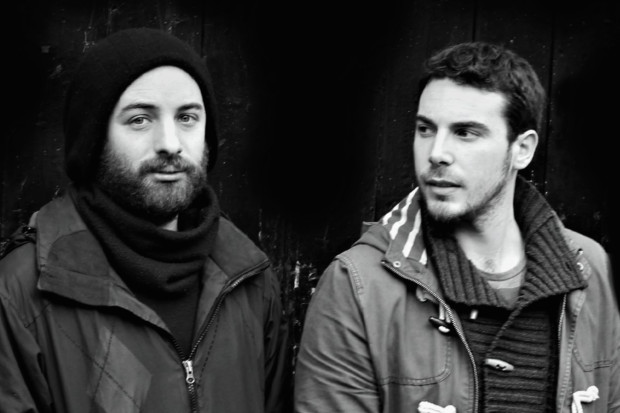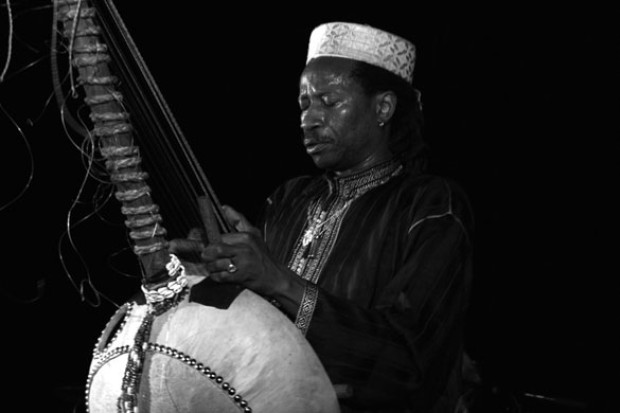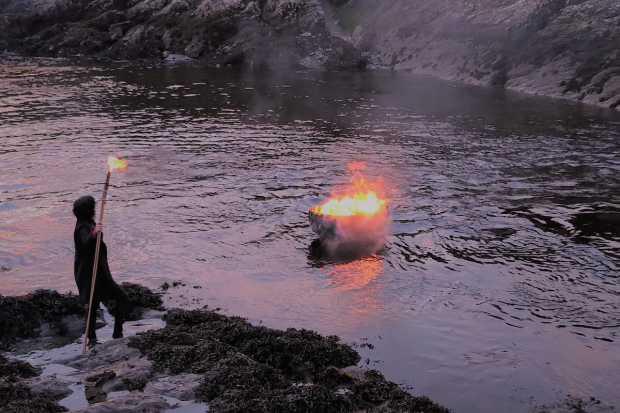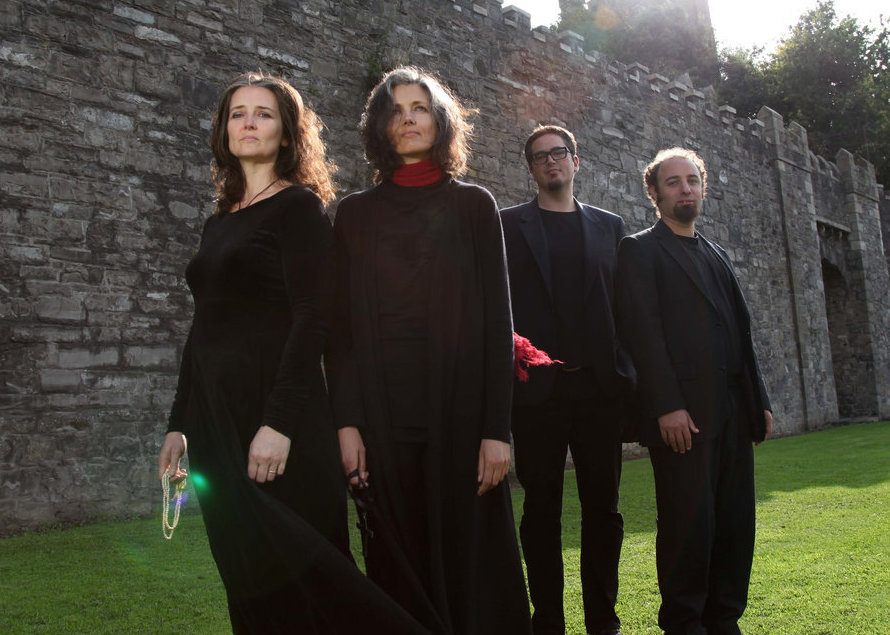
Anakronos – Deirdre O'Leary, Caitríona O'Leary, Francesco Turrisi and Nick Roth.
The Bishop's Zeal
Released by Heresy Records, The Red Book of Ossory is the debut album of Anakronos, a recently formed ensemble consisting of sisters Caitríona O’Leary (voice) and Deirdre O’Leary (clarinets), Nick Roth, (saxophones) and Francesco Turrisi (keyboards and percussion). Billed as a meeting of medieval music and jazz, the inspiration behind the album is The Red Book of Ossory, a curious fourteenth-century manuscript that contains – amongst medicinal and legalistic documents – sixty poems by Richard de Ledrede, Bishop of Ossory. These lyrics were written for the benefit of the celebrants at St Canice’s Cathedral on important feast days ‘in order that their throats and mouths, consecrated to God, may not be polluted by songs which are lewd, secular, and associated with revelry’. Unfortunately, De Ledrede’s moralising zeal also had its sinister side and he was famously responsible for accusing two women of witchcraft: the first, Dame Alice Kyteler, managed to escaped to England but her servant, Petronilla de Meath, was not so lucky and became the first person in history to be charged of witchcraft and burned at the stake. Given the current obsession with righting the wrongs of history, all of this makes Richard de Ledrede a rather strange choice to play such a starring role in the formation of this album, one which undoubtedly raises some interesting questions, but more of this later.
The majority of tracks on the album pair de Ledrede’s lyrics with melodies selected from a number of well-known medieval sources such as the Llibre Vermell de Montserrat – a collection of devotional texts; secular, troubadour songbooks such as the Chansonnier du Roi, and melodies drawn from composers such as Machaut, Jacopo da Bologna and Jacob Senleches. To those familiar with interpretations of medieval music from the likes of Jordi Savall and Hespèrion XXI, the basic polyphonic texture of the music with a vocal line freely counterpointed against one or more lines over a steady beat on percussion, will be familiar. However, that is where the similarities with more traditional interpretations end and the music is thrown into new, uncharted territories both by the effect of the instrumentation and the playing of the ensemble which lends the music a trippy, psychedelic tinge in places that extends beyond jazz into trip hop and trance.
Indeed the range of the album is one of its most impressive features. At one end of the spectrum are tracks such as ‘Maria Noli Flere’ which keeps it relatively simple by attaching de Ledrede’s lyrics to O Virgo Splendens, a straightforward three-part canon from the Llibre Vermell de Montserrat with each of the parts played exactly as written and just some light lilting of the phrasing and a touch of percussion to distinguish it from a more traditional interpretation.
Moving further away from the source material is a track like ‘The Flight of Dame Alice Kyteler’, one of four purely instrumental tracks which, along with the final number ‘The Burning of Petronilla de Meath’, is dedicated to the memory of the two women who were the victims of de Ledrede’s religious excesses. Here, another three-part canon – Andray Soulet by the fifteenth-century Italian composer Matheus de Perusio – acts as the head, as in a small jazz combo, and leads into a blistering improvisational section before neatly returning to the canon at the end. It is in tunes like this that Roth’s prowess as an improviser on the saxophone comes to the fore.
From here we segue into ‘Regine Glorie’, a track whose opening could be a Portishead tune with the cantus firmus from Robyn Dou Way’s Salve Mater Graciae providing a deep groove over a laid-back beat. This, along with a spectral drone, provides the backdrop for Caitríona O’Leary’s singing – which somehow manages to sound both sensuous and pure at the same time – and she is soon joined in canon by her sister on clarinet before leading into a trippy, acid keyboard solo from Turrisi. All of these transitions are beautifully smooth and crafted and yet one is constantly surprised by the wealth of associations floating in from different genres that should, in theory, not work out so well at all.
In addition to the beautiful crafting of each individual piece, a sense of long-range planning is very much in evidence in the ordering of the tracks on the album that pans out right in the middle with the instrumental ‘Ecce Sacerdos Magnus’, where an ambient, calmly ecstatic, chordal halo on the synth is built up before the saxophone and clarinet enter with weaving lines based on antiphons contained in the Graz Manuscript 807. This is definitely an album to be listened to straight through from start to finish in one sitting.
In terms of achieving a fusion between medieval music and jazz, the album certainly breaks new ground. A cursory listen to Jan Garberek and the Hilliard Ensemble will be enough to convince most listeners of the infinitely superior efforts of Anakronos on every level. The perennial problem with most fusion efforts is that the supposed ‘fusion’ of the respective parts is insufficiently carried through and ends up in a kind of shotgun wedding where the respective styles stick out awkwardly. Ostensibly, a fusion of medieval music and jazz would seem fraught with such risks. However, Anakronos have not forced the issue and while the basic structure of the music remains much more medieval than jazz, at appropriate moments, it is gently pushed in productive and surprising directions. Musically, this album can’t come highly recommended enough.
Poetic questions
But to return to the intriguing question raised at the outset: what about the Bishop’s part in all of this? It may well be that de Ledrede’s Latin lyrics are of such transcendent beauty that they are worth separating from his ghastly crimes. This certainly seems to be the view of Caitríona O’Leary who writes in the liner notes that ‘the same fertile imagination that composed the phantasmagoric sorcery charges also composed this beautiful, esoteric and richly imagistic poetry that we perform here’. On the other hand, if you are one of the many people who think that anything sung in Latin sounds beautiful then Caitriona O’Leary might as well be singing Latin translations of Cardi B and it would still sound blissfully transcendent. Happily, to dissuade any further heresy, Anakronos have provided both the Latin texts and their translations in the liner notes, so this does somewhat help the listener bridge the gap and make their own judgments.
It did occur to me that perhaps Anakronos were attempting to subvert de Ledrede’s lyrics by matching them with tunes associated with revelry that the pious bishop would hardly have approved. However this thesis doesn’t really add up as there are sacred melodies here as well and while the tone does alternately venture towards the sultry, sensuous and anarchic, it never does so overtly and there is zero hint of any irony or subversion.
Of course none of this would be worth mentioning but for the fact that Anakronos do seem to go out of their way to ‘big up’ the album’s inspiration. The album’s cover – which would not look out of place on a death metal release – has the title in gothic script against a blood red background and the gothic theme is maintained throughout the rest of the liner notes. The third page of the notes is given over to a ‘For Petronilla’ dedication, but—quite frankly—this does seem rather tokenistic and even though she is also remembered in the album’s closing track, there is no doubt that she is very much the supporting actress to de Ledrede in the leading role.
While our current brand of puritanism is of a different order from de Ledrede’s, listeners will inevitably reflect on these issues and form their own conclusions. But whatever gripes one might have about the inspiration for this album, the ends have clearly justified the means and Anakronos have succeeded in producing one of the records of the year. It will be very interesting to see if the group can take this experiment in further directions with any new projects that might appear once the current plague season has passed. However with The Red Book of Ossory they have set a very high standard for themselves and this work will be hard to surpass.
The Red Book of Ossory is available to purchase from Heresy Records. Visit https://heresyrecords.com.
Published on 14 August 2020
Adrian Smith is Lecturer in Musicology at TU Dublin Conservatoire.












